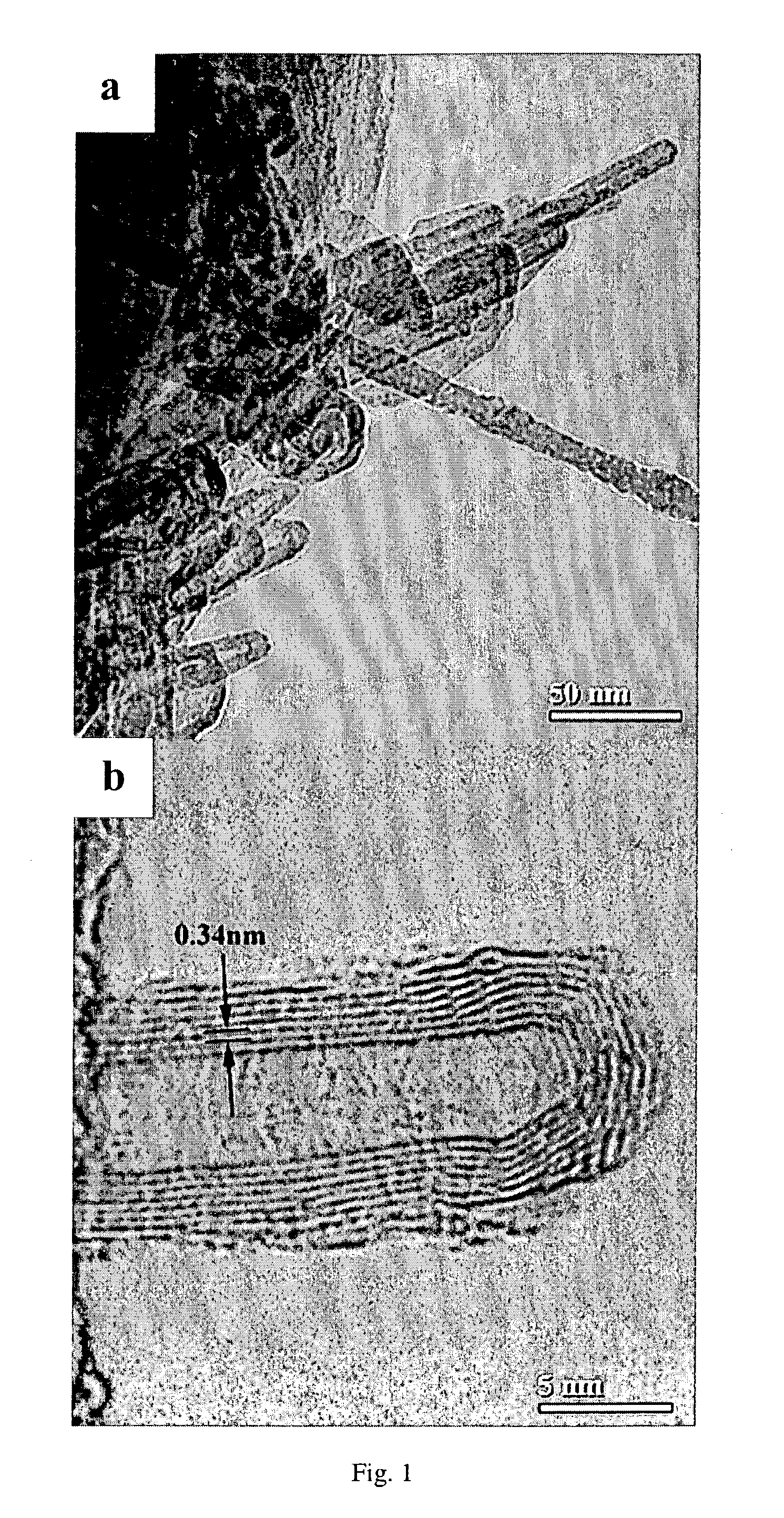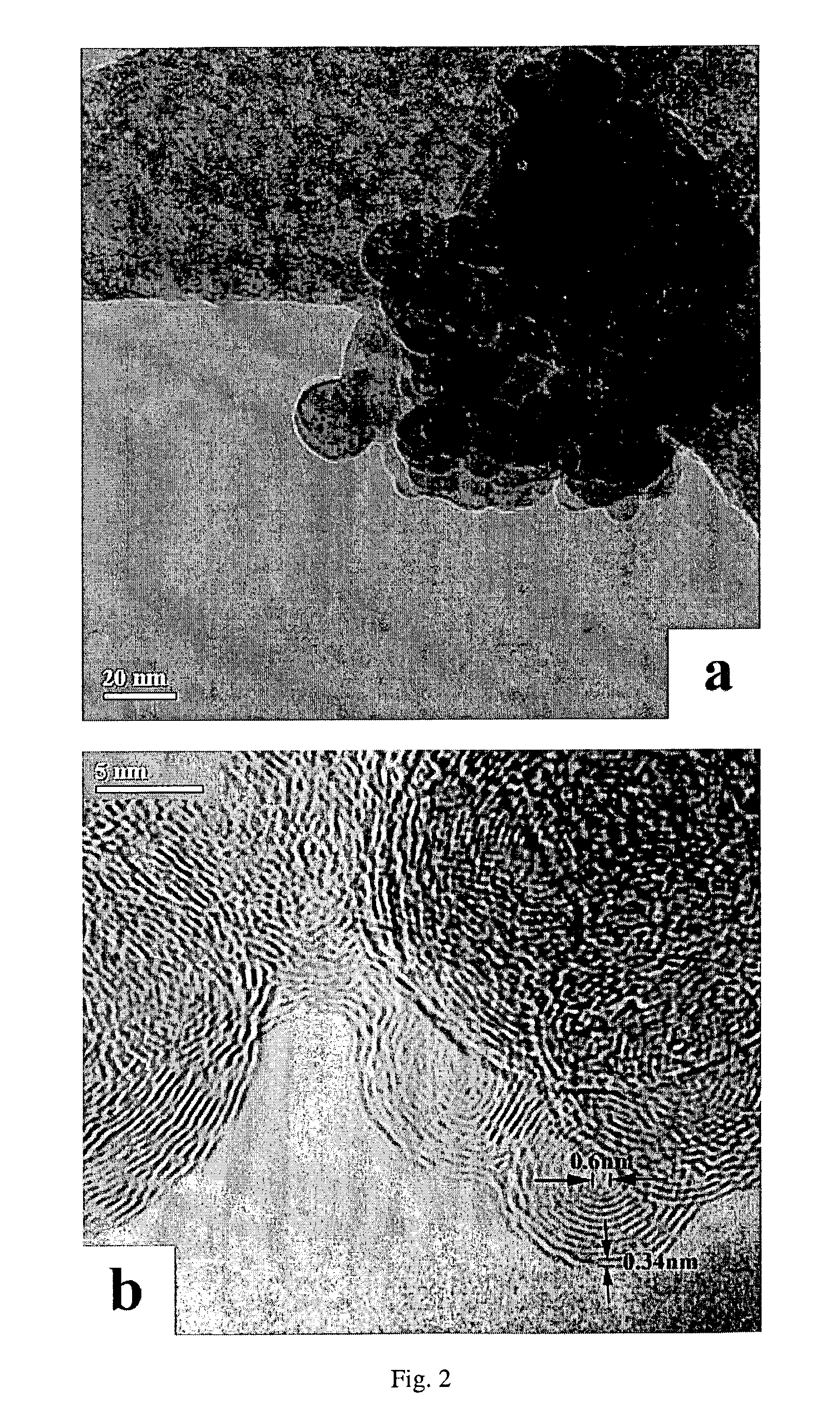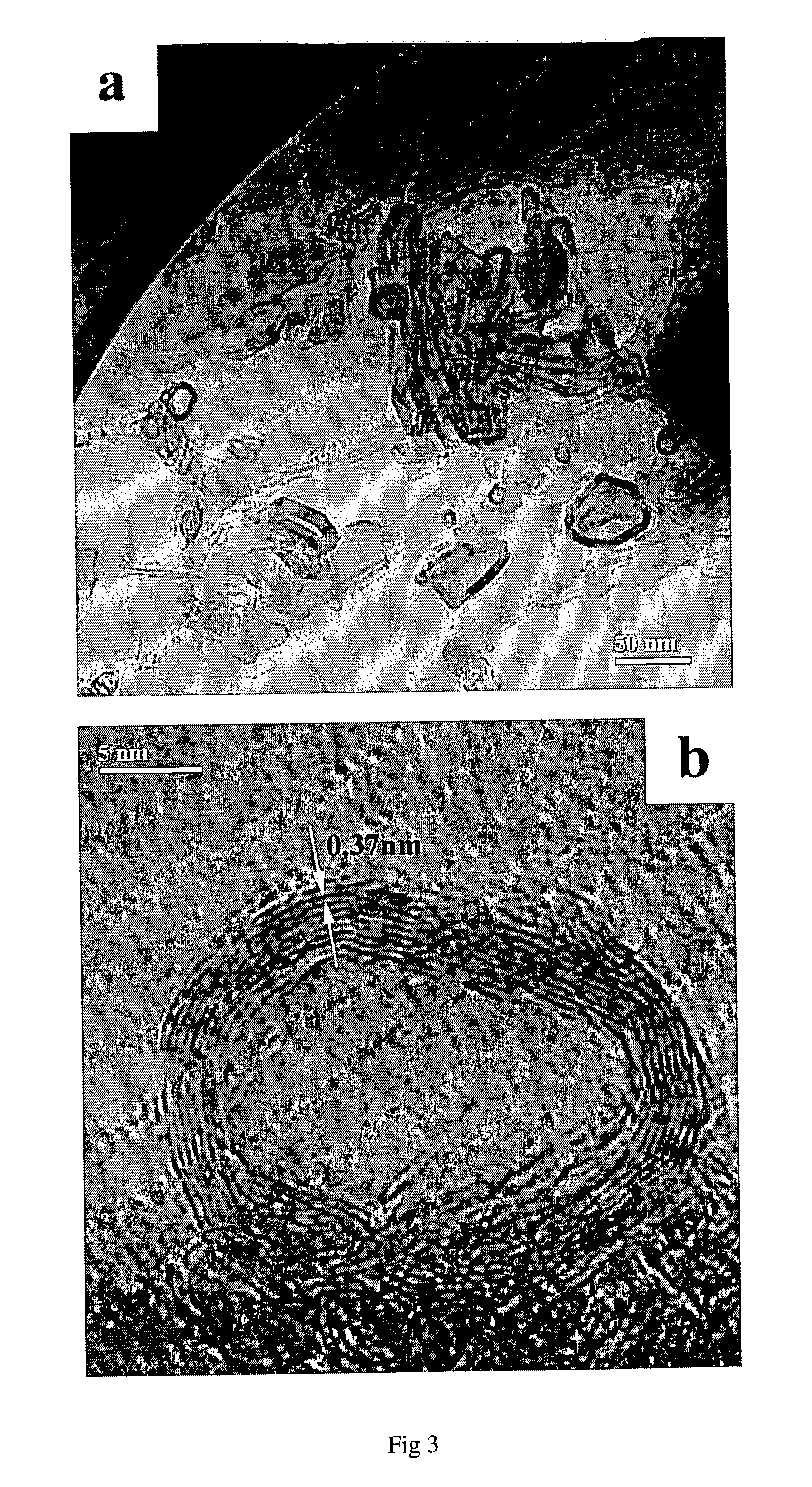Room temperature synthesis of multiwalled carbon nanostructures
a carbon nanostructure and multi-walled technology, applied in the field of room temperature synthesis of multi-walled carbon nanostructures, can solve the problems of substantially increasing the cost of industrial production, producing cnts in high-temperature, etc., and achieve the effect of improving the quality of carbon nanostructures and speeding up reaction speed
- Summary
- Abstract
- Description
- Claims
- Application Information
AI Technical Summary
Benefits of technology
Problems solved by technology
Method used
Image
Examples
example 1
[0023]Silicon nanowires (SiNWs) were used to produce carbon nanostructures. Silicon nanowires, which can be synthesized by thermal evaporation of SiO, are long and freestanding wires with a diameter of several nm to tens of nm, depending upon the preparation conditions and are usually sheathed by a silicon oxide layer. SiNWs were immersed in 5% HF aqueous solution for 5 minutes to remove their oxide outer layer. The HF-etched SiNWs were transferred to a solution of CHCl3 (Lab-Scan 99.5%) immediately and dispersed by bath sonication for 15 minutes at room temperature and atmospheric pressure. The solution changed to colloidal in appearance. High-resolution transmission electron microscopy (HRTEM, Philips CM200 FEG, operated at 200 KeV) samples were prepared by putting a few drops of the resulting solution onto the “holey” carbon grids and dried in air. The morphology and microstructure of products of carbon nanostructures synthesized by this method are shown in FIGS. 1–4 and 6 to 9FI...
example 2
[0031]Silicon nanoparticles were used as the starting material in this example. Silicon nanoparticles were prepared by etching silicon nanoparticle chains in 5% HF aqueous solution for 5 minutes. Silicon nanoparticles were transferred to the solvent of C6H6 (Acros, 99.9%) and sonicated for 15 minutes at room temperature and atmospheric pressure. The solution changed to colloidal in appearance. High-resolution transmission electron microscopy (HRTEM, Philips CM200 FEG, operated at 200 KeV) samples were prepared by putting a few drops of the resulting solution onto the “holey” carbon grids and dried in air. The morphology and microstructure of products of carbon nanostructures synthesized by this method are shown in FIG. 5.
[0032]FIG. 5 shows a HREM image of a Si nanodots covered by 5 layers of carbon sheets with a d-spacing of 4.5 Å.
[0033]It will thus be seen that the present invention, at least in its preferred forms, provides a simple method for forming carbon nanostructures based o...
PUM
 Login to View More
Login to View More Abstract
Description
Claims
Application Information
 Login to View More
Login to View More - R&D
- Intellectual Property
- Life Sciences
- Materials
- Tech Scout
- Unparalleled Data Quality
- Higher Quality Content
- 60% Fewer Hallucinations
Browse by: Latest US Patents, China's latest patents, Technical Efficacy Thesaurus, Application Domain, Technology Topic, Popular Technical Reports.
© 2025 PatSnap. All rights reserved.Legal|Privacy policy|Modern Slavery Act Transparency Statement|Sitemap|About US| Contact US: help@patsnap.com



